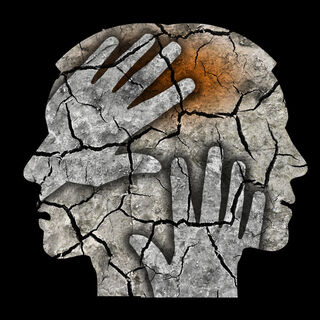Psychosis
What Everyone Should Understand About Shared Delusional Disorder
... and how it can be successfully treated.
Posted April 8, 2022 Reviewed by Ekua Hagan
Key points
- Shared delusional disorder (SDD) is a psychiatric syndrome in which delusional beliefs are transmitted from a dominant person to a dyad or triad.
- SDD often involves a dominant older person and passive younger relatives who share an emotional bond.
- The prognosis for SDD is very good as long as the dominant person is removed from those who are induced to believe the delusions.
- Those who ascribe to QAnon share characteristics with those experiencing SDD, according to experts.

If you’ve been following the streamers, you may have noticed a spate of offerings that reflect shared psychosis. For instance, Bad Vegan on Netflix follows the downfall of a once-successful restaurant impresario who is undone by her boyfriend’s apparent delusions. Another Netflix offering titled The Puppet Master also reflects what appears to be shared delusions imposed by a British man who pretends to be an MI5 agent.
In a likely sign of the times, shared delusional disorder (SDD), which also goes by the name folie à deux or “madness for two,” seems to be a leitmotif in today’s world. Here are 10 facts about this condition based on the evidence.
- SDD is a psychiatric syndrome wherein delusional beliefs, as well as hallucinations, are transmitted from one person to another. The condition was first described in 1800s France by Charles Lasègue and Jean-Pierre Falret.
- The person with the initial delusion is referred to as the dominant person and likely struggles with mental illness. This usually older person then goes on to induce one or two others who accept the delusional system and are often more passive, younger, and less smart, as well as being less forceful and having lower self-esteem than the dominant person.
- The International Classification of Diseases-10 (ICD-10) categorizes SDD as induced delusional disorder, whereas the DSM-5 groups it with specified schizophrenia spectrum and other psychotic disorders.
- According to the literature, only a handful of cases of SDD cases have been documented in elderly patients aged 65 years or more.
- SDD occurs when an intimate emotional bond exists between the primary and secondary persons.
- Psychotic disorders could have genetic underpinnings. Genetic susceptibility is also a factor in SDD, with secondary persons often related to the dominant person.
- Little data exist on the frequency of SDD, but some researchers peg it at around 2% of hospital admissions.
- The consensus treatment for SDD is to separate the inducer of the delusion from those who have been induced. Prompt recognition and referral are key in the treatment of SDD. Once the psychodynamics are targeted with separation maintained, the prognosis is excellent.
- SDD usually manifests in adults but can crop up at any age. It is more common in women as both primary and secondary patients.
- Some experts suggest parallels between SDD and QAnon. As seen with QAnon, certain people exhibit a predilection to embrace implausible conspiracies even when these beliefs are contradictory. Moreover, once a person sees the world as a pervasive conspiracy controlled by “elites,” it’s very hard to get them to change. QAnon provides a false purpose, direction, and stability for U.S. citizens who are threatened, with the knowledge disseminated comprising a game plan. According to the authors of a book chapter published in Mitigating Mass Violence and Managing Threats in Contemporary Society, “There is already evidence that some QAnon followers have been recruited by or are blending in with more militant extremist movements which already have many members … QAnon has embedded in many the idea that every official narrative and mainstream institution is inherently suspect, and that real knowledge is produced by like-minded strangers working together on the internet to ‘do their own research,’ thus making people vulnerable to false narratives and fake news.”
Intriguingly, the notion that delusions are shared is nothing new and dates back to antiquity. In a classic thought experiment called Plato’s “Allegory of the Cave,” a group of people is chained in a cave at an early age. They believe that shadows cast by objects behind them are, in fact, real objects on a wall. When one prisoner escapes and later returns, he informs the prisoners that the shadows in the wall are incomplete projections of reality and that a different reality exists outside. Instead of embracing the news that a bigger world exists, certain members of the group instead adopt the belief that if they leave the cave, they will become addled like their friend.
Facebook image: BearFotos/Shutterstock
References
Christensen RC, Ramos E. The social and treatment consequences of a shared delusional disorder in a homeless family. Innov Clin Neurosci. 2011;8(4):42-44.
Crews, Gordon A., et al. "Folie à Deux in the 21st Century: QAnon and the American Dream Delusion." Mitigating Mass Violence and Managing Threats in Contemporary Society, edited by Gordon A. Crews, et al., IGI Global, 2021, pp. 75-84.
Soni A, Bhaskar M, Modi R, Sangwan V. “Folie á deux”: A delusion shared by two. Journal of Mahatma Gandhi University of Medical Sciences and Technology. 2021;6(1):32-34. doi:10.5005/jp-journals-10057-0141.


